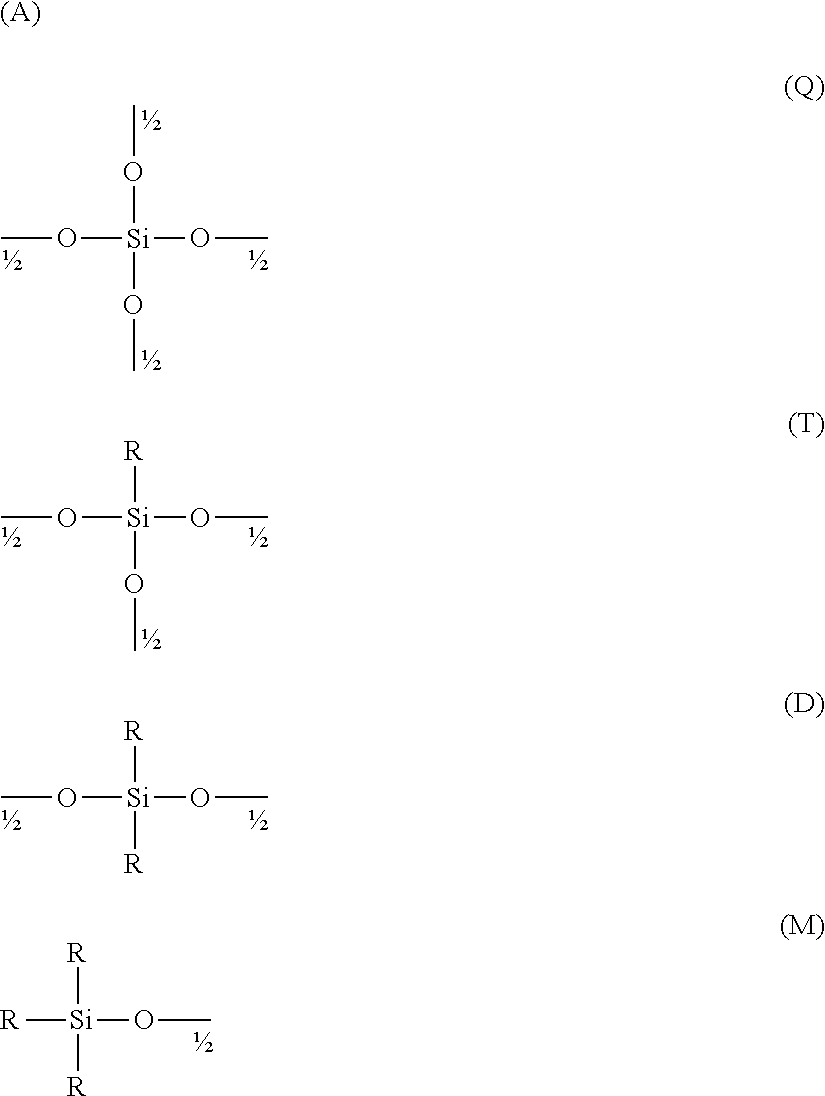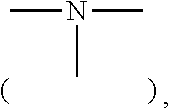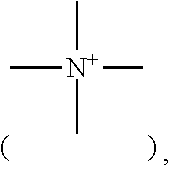Use of polycarboxylic acid compounds for the treatment of fibrious amino acid based substrates, especially hair
a technology of fibrous amino acids and polycarboxylic acid, which is applied in the direction of hair cosmetics, organic chemistry, chemistry apparatus and processes, etc., can solve the problems of harsh and regulated substances, and achieve the effects of increasing the molecular weight of water soluble fe or zn salt, increasing the molar amount of optional tannins, and increasing the molar amount of carboxy groups
- Summary
- Abstract
- Description
- Claims
- Application Information
AI Technical Summary
Benefits of technology
Problems solved by technology
Method used
Image
Examples
example 1
A Glycerol Diglycidyl Ether Based Succinic Acid Ester Derivative
[0275]In a 250 ml three-necked flask, equipped with refluxing condenser, thermometer and magnetic stirrer, 23.1 g (195.8 mmol) succinic acid, 122 g dipropylene glycol and 0.8 g triethylamine are mixed and heated to 90° C. 20 g (195.8 mmol epoxy groups) glycerol diglycidylether
[0276]
are added dropwise within 20 minutes. The mixture is kept at 90° C. for 12 hours. Afterwards, the transparent slightly yellow mixture is cooled to room temperature and the conversion of the epoxide groups determined by means of 1H NMR spectroscopy. The conversion of epoxy groups is 100%.
[0277]A product essentially consisting of the following isomers is obtained
[0278]
example 2
Glycerol Diglycidylether with Three Succinic Ester Functions
[0279]In a 100 ml three-necked flask, equipped with refluxing condenser, thermometer and magnetic stirrer, 10 g (97.9 mmol epoxy groups) of glycerol diglycidylether, 11.56 g succinic acid (97.9 mmol), 61.7 g methoxypropyl acetate and 0.53 g trimethylamine are mixed and heated to 90° C. for 15 hrs. Upon progression of the esterification reaction the mixture turns turbid. The conversion of the epoxide groups, as determined by means of 1H NMR spectroscopy is 100%.
[0280]4.9 g (48.9 mmol) succinic acid anhydride are added and the reaction continued at 90° C. for 6 hrs. Upon progression of this second esterification reaction the mixture turns transparent (slightly brownish). The conversion of the anhydride groups, as determined by means of 1H NMR spectroscopy, is 100%.
[0281]61.7 g 1,3-butanediol are added. The methoxypropyl acetate is removed under reduced pressure at 75° C. / 3 mm Hg.
[0282]A slightly brownish transparent liquid is...
example 3
A Glycerol Diglycidyl Ether Based Adipic Acid Ester Derivative
[0285]In a 100 ml three-necked flask, equipped with refluxing condenser, thermometer and magnetic stirrer, 10 g (97.9 mmol epoxy groups) of glycerol diglycidylether, 14.31 g adipic acid (97.9 mmol), 56.71 g 1,3-butanediol and 0.48 g trimethylamine are mixed and heated to 90° C. for 9.5 hrs. The conversion of the epoxide groups, as determined by means of 1H NMR spectroscopy is 99.5%. A colorless transparent liquid is obtained.
[0286]A product essentially consisting of the following isomers is obtained:
[0287]
PUM
| Property | Measurement | Unit |
|---|---|---|
| molecular weights | aaaaa | aaaaa |
| molecular weights | aaaaa | aaaaa |
| temperature | aaaaa | aaaaa |
Abstract
Description
Claims
Application Information
 Login to View More
Login to View More - R&D
- Intellectual Property
- Life Sciences
- Materials
- Tech Scout
- Unparalleled Data Quality
- Higher Quality Content
- 60% Fewer Hallucinations
Browse by: Latest US Patents, China's latest patents, Technical Efficacy Thesaurus, Application Domain, Technology Topic, Popular Technical Reports.
© 2025 PatSnap. All rights reserved.Legal|Privacy policy|Modern Slavery Act Transparency Statement|Sitemap|About US| Contact US: help@patsnap.com



